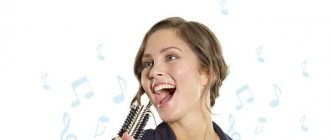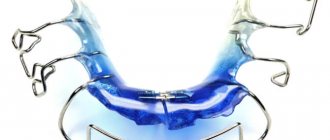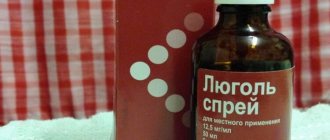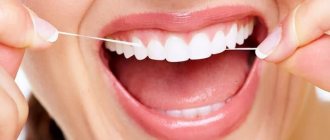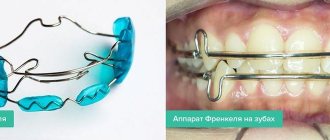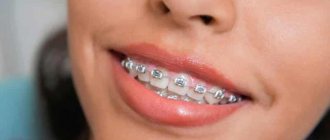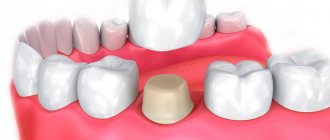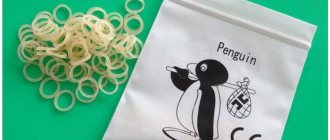In orthodontics, plates or braces are most often used to correct bite pathologies. These two types of structures successfully cope with the task assigned to them, but they are very different from each other in type, purpose, price, etc. Therefore, many patients are concerned with the question, which is better to use for braces or plates to correct the bite? Only through comparison will each patient be able to decide on the choice of the system that is suitable for him.
What is the difference between the design of plates and braces?
Plates and braces are equally often used in pediatric orthodontics to correct bites and correct dentition.
They have significant design differences:
- Plate structures are a removable device for the correction of teeth occlusion disorders. Designed to correct minor malocclusions. They align separately located units well with each other. The devices cannot apply significant pressure to the jaw and teeth. Systems can only hold units and prevent them from bending. They can activate or inhibit jaw growth. These designs are worn for several hours during the day. It is possible to remove them from the oral cavity and install them yourself. They are removed during meals for hygiene purposes.
- Braces are a reliable orthodontic system and are non-removable structures. It cannot be removed by the patient himself. She copes with the correction of the most complex dental defects. The process of straightening teeth with systems is quite lengthy. It lasts up to several years, so a certain psychological attitude is required from the patient. The design consists of locks that are tightly attached to the teeth using special glue. They are fastened with a metal arch, which exerts significant pressure on the dental units and alveolar processes.
Only the orthodontist decides which design to choose for the patient to correct closure anomalies.
Differences in mechanism of action
Correction devices differ in their mechanism of action. Plate designs have one or more screws. They allow the growing jaw to expand, making room for permanent teeth. Metal arches correspond to the correct position of units in the dentition. The device cannot have a significant effect on the jaw. She cannot move dental units over a significant distance. It is used when there is no need to move it over long distances. It copes well with tilting and turning individual units. It is also used in young children to prevent malocclusion or to change the width of the growing palate.
Appliances for permanent wear have a wider range of possibilities for correcting malocclusion and dentition defects. The systems are able to place the tooth in the required place by pulling it out of the alveolus. Braces can immerse it deeper into the jaw, tilt it in the required direction, or rotate it relative to its axis. Unlike removable appliances, they are capable of correcting serious disorders of the dental system, and not just preventing them.
How to determine which is better
Plates are more suitable for children aged 5–7 years, whose temporary bite is replaced by a permanent one. Even kids can take care of retainers; they are easy to remove for meals and clean with a regular brush. The plates are inexpensive, but they do not correct serious deviations.
When wearing braces, which place constant pressure on the row:
- adaptation occurs quickly;
- the teeth will mix in the right direction;
- birth defects are eliminated;
- abnormal bite is corrected.
The answer to the question of what is better: metal braces, another type of braces or a plate depends only on the real needs of the patient.
You should consult your dentist to determine the right orthodontic system for you. The doctor's consultation
Differences in indications for installation
Indications for the installation of both devices are violation of jaw closure, curvature of the dentition, displacement of individual dental units. However, they may differ in a number of parameters.
Indications for installing permanent structures:
- single defects of dental units;
- several crooked adjacent incisors;
- large gaps;
- anterior displacement of the incisors;
- various types of closure defects;
- impaired diction associated with malocclusion;
- deformations of the facial skeleton;
- crowding.
Indications for the installation of systems are severe pathologies of the dentofacial system, including in a fully formed jaw.
Indications for correction of anomalies with plates are as follows:
- beginning movement of teeth in the wrong direction;
- high probability of displacement of dental units;
- signs of initial jaw deformation;
- symptoms of pathological changes in the width of the palate.
Indications for the use of corrective plate devices are mild, incipient manifestations of pathology.
Differences in age indications
The difference between a plate and braces is that they are used in different age groups of patients. Permanent systems are widely used only from the age of 12, when the jaw is already fully formed and all teeth have erupted. From the age of 14, adolescents can have lingual devices installed, this is explained by the difficulty of caring for them. Sometimes special fixed devices are installed starting from the age of seven. If they have severe bite defects that cannot be corrected later.
Plates are installed for children aged six to twelve years, during the replacement of the primary bite with a permanent one and the formation of the jaw bones. In adults, they are less effective, since a significant effect on formed bone structures is required. They use removable devices after treatment with permanent systems.
Useful tips
As we have already said, the child will have to get used to the plate for some time. In the first 1-2 days, the baby may feel pain and discomfort, his speech may be impaired, and salivation may increase. And, of course, the child will want to remove the record and begin to act up.
Typically, all adaptation symptoms subside 3-7 days after installation and the child ceases to notice the device in the mouth.
It is important for parents to ensure that the child does not try to remove the foreign device from the mouth. Try to distract your child from unpleasant sensations - play, go for a walk, watch an interesting colorful cartoon together. A few days will “fly by” unnoticed and the child will get used to his new smile assistant.
After installing the plate, special attention should be paid to caring for the baby’s oral cavity. Be sure to brush your teeth twice a day (remove the plate during this period) and thoroughly clean the structure itself.
We hope that very soon your child will show off with a luxurious, even smile. And so that children are happy to brush their teeth and enjoy each such procedure, choose for them a pleasant and effective toothpaste, such as Asepta Kids, a gel paste for children from 4 to 8 years old. This reliable product for daily protection against caries is designed taking into account the structural features of children's enamel.
Fluoride-free gel paste carefully protects teeth from caries, cares for baby’s gums, and prevents the development of inflammation in the oral cavity. The product does not contain fluoride, parabens, sodium lauryl sulfate or antiseptics, and the bright taste of “tutti-fruit” will make brushing your teeth very pleasant for your child.
Sources:
- Study of the clinical effectiveness of the use of therapeutic and prophylactic agents of the ASEPTA series in the treatment of inflammatory periodontal diseases in children and adolescents (I.V. Klimova) Irina Vladimirovna Klimova, Candidate of Medical Sciences, Associate Professor of the Department of Pediatric Dentistry, Novosibirsk State Medical University. Department of Pediatric Dentistry, Novosibirsk State Medical University.
- The use of drugs from the Asepta line in the complex treatment of inflammatory periodontal diseases (N.V. Berezina E.N. Silantyeva S.M. Krivonos, Kazan State Medical Academy. Kazan.) N.V. BEREZINA, E.N. SILANTIEVA, S.M. KRIVONOS Kazan State Medical Academy
- Clinical experience in using the Asepta series of products Fuchs Elena Ivanovna Assistant of the Department of Therapeutic and Pediatric Dentistry State Budgetary Educational Institution of Higher Professional Education Ryazan State Medical University named after Academician I.P. Pavlova of the Ministry of Health and Social Development of the Russian Federation (GBOU VPO RyazSMU Ministry of Health and Social Development of Russia)
Pros and cons of orthodontic structures
Let's look at the positive and negative qualities of the two methods of bite correction.
Pros and cons of permanent devices
They have their pros and cons as any method of bite correction.
Braces for children have the following advantages:
- provide rapid correction of anomalies due to continuous, powerful impact;
- corrects complex, congenital defects;
- wide range of application by age;
- easy adaptation;
- do not provoke problems with diction;
- quick repair possible;
- the ability to move dental units in the desired direction.
These devices not only have advantages, they also have disadvantages.
These include:
- low aesthetics of metal devices;
- difficulties in caring for them;
- high price.
Despite the inconvenience of correction systems and other disadvantages, it is widely used among adolescents.
Which braces are best for a child?
Wearing orthodontics is a long process, and the structure is almost always noticeable on the teeth. If the question arises about when to get braces for a teenager, he often refuses for fear of ridicule from his peers. Modern dentistry offers systems that differ in appearance and cost. The specific type is determined by the doctor, based on the volume of treatment and the condition of the teeth. You can discuss options with him and choose the one that suits parents and child.
The most common types of braces used in children are:
- Lingual. This design is attached to the inner surface of the tooth, maintaining a natural smile. Their effectiveness is not inferior to conventional metal ones, but there are significant disadvantages - due to the peculiarities of their location, it is more difficult to maintain hygiene and notice damage to the enamel in a timely manner; the wear period is usually extended. Also, lingual braces interfere with the tongue when pronouncing sounds, so a common side effect is impaired diction.
- Metal. Such braces have been used for a very long time and have proven their effectiveness even in the most advanced cases. When metal braces are recommended for children, age plays a special role. They are inexpensive compared to their analogues, but are too noticeable on the teeth, so they are not very popular among teenagers. In addition to the price, the metal structure is distinguished by its reliability - the system holds up well and is difficult to damage.
- Sapphire. Made from artificial sapphires, they are almost invisible on the teeth due to the transparency of the material. The smile remains completely natural, and this makes this type of braces very popular. But they have two main disadvantages - fragility and price. The cost of the structure is approximately 1.5 times higher than its metal counterpart, and is also noticeably inferior in wear resistance.
- Unligated. The absence of ligatures - connecting elements for fixing the arch - makes the braces less noticeable. But these are not the only advantages. It’s easier to care for your teeth with such a system, and you can visit the doctor less often, because you don’t have to replace fasteners. The main and, perhaps, the only disadvantage is the cost: it is noticeably higher compared to simple metal ones.
- Ceramic. This type of braces is made from dental ceramics, so they are almost invisible on the teeth, and the quality of correction is comparable to metal. They are quite durable, but at the same time they cost significantly more and are difficult to maintain. If the child is already a teenager and can handle hygiene independently, a ceramic system will be an excellent solution.
- Plates. These are not exactly braces, but essentially they also belong to orthoconstructions. They are inexpensive, easy to care for and comfortable to wear. But with the help of plates, only minor violations can be corrected at an early age, when the jaw is still growing. It can not be used all day long or from an earlier age, so this alternative to braces is well suited for preschool children.
Installing braces scares many people: children because of the visibility of the structures, parents because of the price, and everyone together because of the complexity of the procedure and care. But often orthodontic structures are the only way to make a beautiful smile and maintain oral health. And if you have problems with your bite, then this is also a way to maintain proper digestion and clear diction.
We told you at what age children get braces and what kind they are. Take care of your teeth, consult a doctor in a timely manner - and then the reflection in the mirror will delight you with a beautiful smile!
Pros and cons of plates
They also have their advantages and disadvantages.
The advantages of this type of structure include:
- no labor-intensive care required;
- does not interfere with oral hygiene;
- removed for meals;
- atraumatic;
- easy adaptation;
- high efficiency in childhood;
- affordable price;
- are removed independently.
Orthodontic removable appliances have a few disadvantages.
These include:
- ineffectiveness of correction in adults;
- allergies are possible;
- severe anomalies are not corrected;
- fragility;
- If it breaks, it’s difficult to fix, you have to order a new one.
A number of positive qualities of plates for children ensure their widespread use in pediatric orthodontics.
Price difference
Permanent correction systems and measures for their installation and maintenance will cost the patient much more than corrective plates.
Here is the estimated cost of various types of structures per jaw:
- metal – 30,000 rubles;
- ceramic – 40,000 rubles;
- sapphire – 70 thousand rubles;
- sapphire with a white arc - 80,000 rubles;
- lingual – up to 100,000 rubles.
The cost of the structure itself is not the final price of the entire treatment. The price for all services for installation, activation of the device and its removal is separate. Various types of plate correctors cost from 20 to 50 thousand, depending on the model.
Choosing plates or braces is quite difficult for a non-specialist. The choice of a device for the correction of dentoalveolar anomalies is carried out only by an orthodontist, taking into account all the characteristics of the patient.

